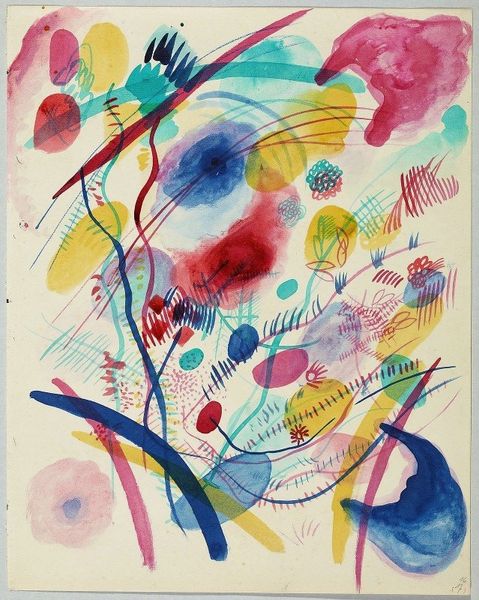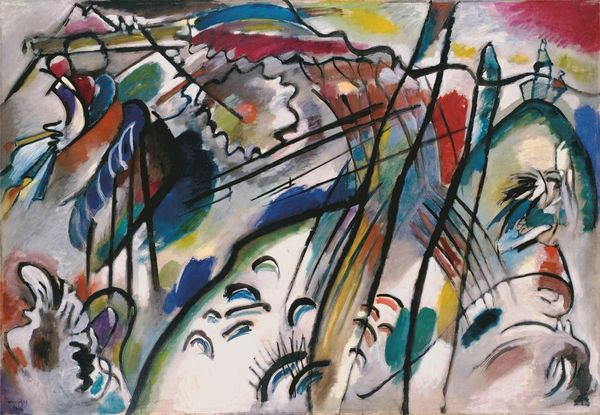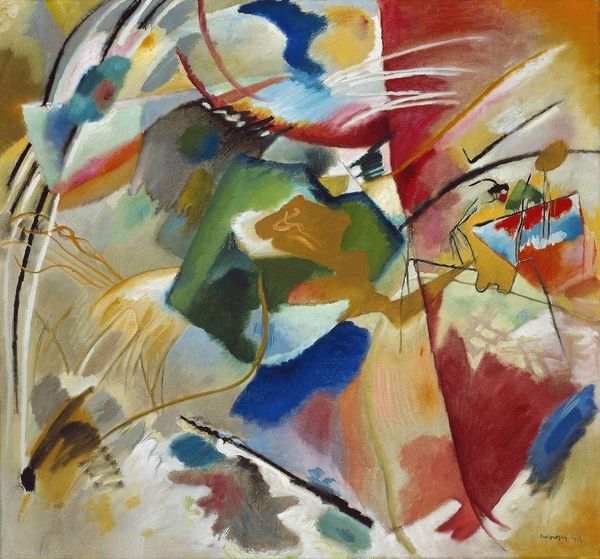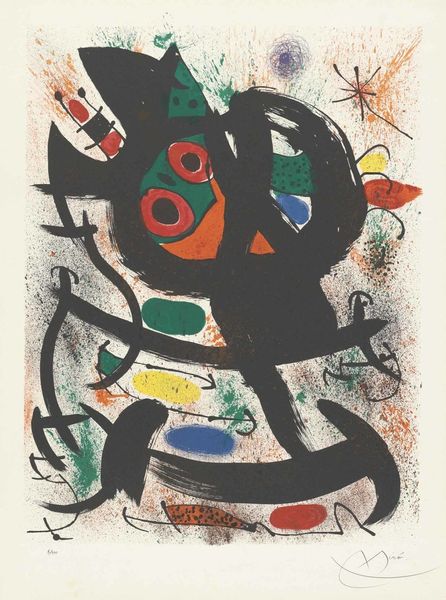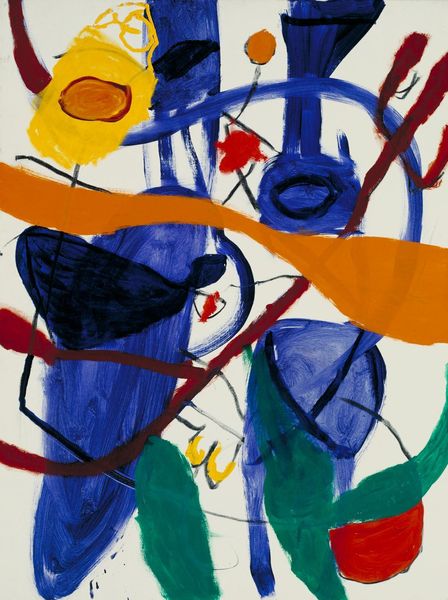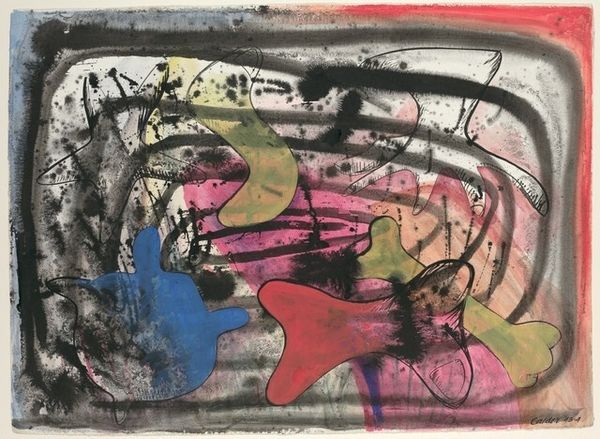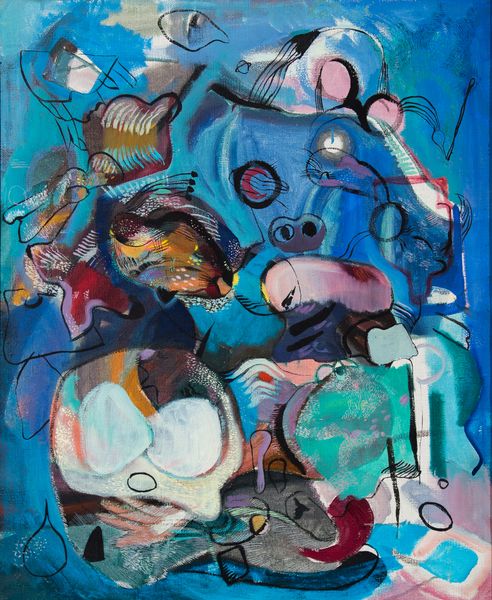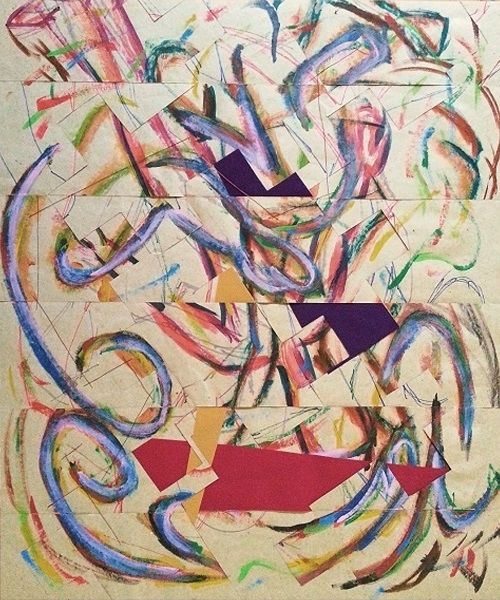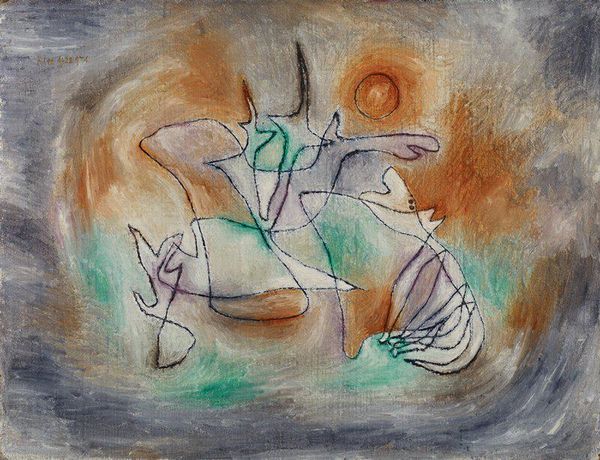
Copyright: Public Domain: Artvee
Editor: We’re looking at Wassily Kandinsky’s "Draft for ‘Picture with a White Border’ IV" from 1913, rendered in watercolor. It strikes me as incredibly dynamic, a chaotic dance of lines and colours. What social forces shaped a painting like this? Curator: That's a keen observation. Consider the cultural climate of pre-World War I Europe. There was a widespread sense of anxiety and impending change, mirrored by Kandinsky’s bold rejection of representational art. Art institutions, accustomed to academic painting, were challenged by avant-garde movements. How do you think audiences responded to works like this? Editor: I imagine it was pretty divisive! It's so far removed from traditional landscapes or portraits. It’s difficult for me to find the subject… Was Kandinsky trying to make a statement about those traditions? Curator: Precisely! He sought to express inner spirituality through abstraction, connecting to a rising interest in theosophy and occultism within intellectual circles. The deliberate departure from visual reality was a form of rebellion against the materialist values of the time. What role did German Expressionism have here? Editor: So the rise of urban industrialization and the decline of traditional societal structures were rejected through form and color! It makes me appreciate the political undercurrent that abstract art provided at that moment. Curator: Yes, and the public role of art began to shift. Galleries started showcasing these radical ideas, and discussions about art's purpose intensified. Artists like Kandinsky played a vital role in challenging conventions and paving the way for new modes of expression. Editor: It's amazing how much social and political context is embedded within what appears to be just colors and shapes. I’ll certainly never see this piece the same way. Curator: Indeed, this work prompts us to investigate art’s purpose within a shifting social landscape. It really expands the notion of the possible when artists challenge prevailing ideas.
Comments
No comments
Be the first to comment and join the conversation on the ultimate creative platform.
